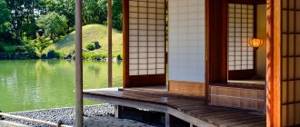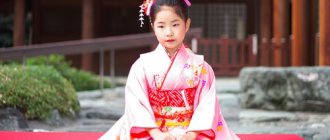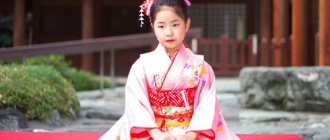15.07.2021 18:00
504
Japanese cuisine differs from all others in that it is permeated with the most important philosophy: to protect nature, treat its gifts with respect and gratitude. What does food have to do with it? The fact is that Japanese chefs prefer to prepare food in such a way that its original appearance and taste do not change too much after heat treatment.
Some scientists have concluded that there are so many long-livers among the Japanese because they cook their food “correctly.” You will learn about the most important things in the food culture of the inhabitants of the eastern country from this article.
Features, methods and technology for processing products
It is important for the Japanese that the food they prepare is not overloaded with spices, sauces, or heat treatment, so that the ingredients of the dishes are recognizable. Only rice and soy sauce can be stored for a long time; other products spoil quickly.
Basic diet:
- vegetables;
- legumes;
- seafood.
The main methods of preparing dishes, namely heat treatment, are literally the standard of proper and healthy nutrition.
Methods of heat treatment of products:
- Cooking virtually eliminates frying in oil.
- Boil over low heat or steam – thereby preserving the beneficial properties of the product.
- Grilling or quickly frying food - vegetables turn out crispy and retain their original appearance and taste.
- The traditional way of cooking is to cook vegetables and fish on a grill over an open fire.
Due to the fact that the main Japanese cutlery is chopsticks, it is important that food is cut into pieces that can be easily picked up and put into the mouth.
Ramen
Ramen is perhaps the most common dish in Japan. This is a fermented bean noodle soup. Sprouts, greens and pieces of meat are added to ramen. They eat it with chopsticks and a porcelain spoon: they use chopsticks to catch noodles and other hard pieces, and slurp the broth with a spoon. Ramen is served everywhere and is inexpensive.
Ramen with pieces of pork and greens
Cafe serving ramen
Cafe showcase with different types of ramen
Japanese people relaxing in a cafe after work
There is also a rather strange dish of dry noodles drenched in hot sauce. In the upper part, where the noodles come into contact with the sauce, they soften, but a significant part remains dry, and you have to crunch them, which is not very pleasant.
Dry noodles with sauce
Spices in the diet
Sauces and spices in Japanese cuisine serve as the icing on the cake, adding a special taste to slightly bland food. There are not many seasonings in Japanese cuisine that boast a spicy aroma, but the pungency of taste is a completely different matter.
Favorite Japanese spices:
- Ground Japanese horseradish root or wasabi - resembles mustard, only green and spicier;
- Shichimi - a mixture of several types of pepper;
- Ginger;
- Soy sauce (shoyu);
- Mirin is a rice wine that is used in food only as a sauce.
Residents of the Land of the Rising Sun also love to use pickled and pickled vegetables – garlic, radishes or cucumbers – as a seasoning for their dishes.
What do the Japanese eat for lunch?
The Japanese prefer light lunches. Its basis, of course, is rice. It is served with fish, which can be raw, grilled or marinated. Boiled vegetables or salads can complement lunch. Rice vinegar or soy sauce is used as a dressing in salads. I almost never use mayonnaise in traditional cuisine. At the end of lunch they drink tea.
Nowadays Western influences are increasingly felt in Japan. That's why you can often find young Japanese people eating fast food.
Main dishes
Despite the fact that the Japanese diet consists of simple and understandable foods, this does not prevent them from eating a varied and tasty diet.
- Onigiri - portioned balls of unleavened rice, wrapped in a strip of nori seaweed with filling (omelet, salad, meat, fruit, etc.);
- Sushi;
- Sashimi is raw fish;
- Fish cooked on a grill over an open fire or grill with a crispy crust;
- Fugusashimi is specially prepared meat from the poisonous puffer fish.
- Niku-zaga - we are familiar with this dish as a potato stew with meat.
What do the Japanese eat in everyday life?
- All seafood: salmon, eel, tuna, mussels, shrimp, seaweed;
- Rice, legumes, soybeans;
- Vegetables;
- Noodles: egg, wheat, rice;
- Meat and poultry - for obvious reasons, are much more expensive and are used in smaller quantities than seafood.
Green tea is better than sake
Slender Japanese women will tell you a lot about the secrets of tea drinking. Green tea contains antioxidants, which both have a positive effect on your figure and slow down the aging process of the body. Not a bad combo, right? If anyone still thinks that the main drink in Japan is sake, they are very mistaken. Green tea and nothing else. And at least several times a day.
Photo: istockphoto.com
Japanese breakfast
Arriving in the land of the rising sun, you can be amazed at Japanese breakfasts for a long time. It can easily be compared to an energy bomb. In our opinion, the variety of Japanese breakfast dishes would be quite suitable for lunch or dinner.
So, the Japanese have breakfast:
- Steamed white or brown rice;
- Miso soup - tofu and seaweed are added to a traditional Japanese broth;
- Tsukemono – vegetables or fruits in marinade;
- Tamagoyaki or puff omelette.
The peculiarity of the Japanese breakfast is that a variety of dishes are served in small portions.
The first grain of rice. The Japanese and their traditions.
How do you imagine ancient Japan? Samurai, vassals, beautiful pagodas, cherry blossoms, hara-kiri, katanas. And all this is flavored with a code of honor, loyalty to one’s master, the desire for beauty and mastery in everything.
It seems that ancient times have nothing to do with it. But, if you look more closely, all national characteristics grow from there. The Japanese are still loyal to their vassal, they work responsibly and hard. They get very little rest. Some organizations even introduced special people who send workers home. On vacation, the Japanese contemplate cherry blossoms, climb Mount Fuji, brew tea, and eat. Moreover, they prefer to eat a lot and, we would say, interestingly.
Most sources characterize the Japanese as polite, inquisitive, responsible, collaborative, hardworking people. Statistical surveys show that the country's residents are proud of its history and traditions, so the entire culture is imbued with them.
Tea ceremony
For residents of the country, drinking tea is a whole ritual associated with ancient traditions and Buddhist philosophy. In order to conduct it, some Japanese equip special tea houses. The ceremony resembles a sacrament: first, matcha green powder tea is brewed in complete silence, without making a sound. The owner of the house pours a small amount of boiling water over the dry tea. The drink should be covered with green foam and only then add more boiling water. All guests drink from a common cup, and then everyone receives a portion of tea. Sweets are served with tea - wagashi, hagashi and mochi.
Traditional Japanese drinks include:
- Green tea;
- Sake – rice wine;
- Shiochu is an alcoholic drink with a strength of 25-30 degrees, does not contain sugar and is therefore considered dietary;
- Coffee - prefer instant;
- Beer.
Anyone who would like to understand in detail the benefits and harms of meat, as well as get an idea of healing nutrition that ensures health and longevity, can do this by reading the book by Shatalova G.S. Healing nutrition
https://www.rulit.me/books/celebnoe-pitanie-read-510246-1.html
Shatalova G.S. she herself was a model of health and longevity, pulling hopeless patients, whom official medicine had abandoned, from the abyss and returning them to 100% health.
Galina Sergeevna Shatalova conducted many experiments proving that with healthy nutrition a person can reduce food consumption by 5-7 times compared to accepted standards and still feel good.
In 1983, a group of athletes who switched to healthy nutrition, i.e. on plant foods, participated in the annual 7-day ultra-marathon dedicated to Cosmonautics Day along the route Gagarin - Kaluga - Moscow - Zvezdny with a length of about 500 km. When preparing for the race, they received no more than 800 kcal, and on days of particularly heavy loads up to 1200 kcal. with plant foods. All other athletes ate according to the standards developed by the Institute of Nutrition and received 6000 kcal from high-calorie foods, also recommended by the Institute of Nutrition. Energy consumption during the run was estimated at 5000-6000 kcal per day. Four athletes were selected as a control group, who, in terms of physical capabilities and level of training, approximately corresponded to Shatalova’s group. The result was stunning: the athletes from Shatalova’s group turned out to be more resilient and, unlike the others, they not only did not lose weight, but even gained weight.
Shatalova also conducted several experiments with climbers.
A continuation of the experiment with climbers was an expedition of mountain tourists in the Ala-Archa climbing camp, in which two men and two women participated. One of them was the author of these lines. We got up before sunrise and went to the mountains without breakfast. We walked about 15 km (according to the pedometer we took with us) and returned to camp by five o’clock in the evening. Here the doctor and the camp director weighed and examined us, after which we went to lunch.
Our diet included hot stews, freshly prepared porridges from sprouted wheat, and decoctions of wild herbs with juniper and barberry. After lunch, talking calmly, we walked another 10 km, but now not up, but down the slopes of the mountains, after which we returned. Thus, we covered about 25 km per day. We slept in the open air, ate once a day, and drank twice. None of us lost weight or got sick with anything. On the contrary, they left healthier and full of strength.
And finally, to complete the conversation about experiments with climbers and mountain tourists, let me remind you of our trek along mountain trails from Nalchik to Pitsunda; lasting 23 days. At this time, our daily diet consisted of 50 g of buckwheat and 100 g of dried fruit during heavy physical activity. Suffice it to say that during the days of travel we overcame four mountain passes. We entered Pitsunda vigorous and cheerful, while our random fellow travelers-tourists, who ate in accordance with the recommendations of the theory of balanced nutrition, could barely move their legs from fatigue.
Even more impressive were the results of the four walking treks I organized through the Central Asian deserts. Both I and my companions received no more than 600 kcal per day from food, while walking up to 30-35 km per day along shifting sands in a sharply continental desert climate.
Particularly instructive was the first one I have already mentioned, which took place in July-August 1987, during which, at the request of the Geographical Society of the USSR, I also checked the possibilities of reducing the generally accepted norm of water consumption during summer hikes in the desert. Previously, it was believed that during the hot summer months, during hiking expeditions into the hot sands, a person needed to consume at least 10 liters of water to ensure sufficient thermoregulation of the body.
It was believed that sweat, by moisturizing the surface of the skin and then evaporating, cools it. But I am a doctor and I know that when water enters the body, it is not just “directly” released through the pores, but goes through a series of serious transformations that require considerable energy expenditure from the body. Therefore, excess fluid intake weakens and overheats it. By the way, this phenomenon has been known since ancient times. It is no coincidence that Julius Caesar, before selecting replacements for his legions from among the candidates, arranged a secret test. The recruits had to make a long trek on foot without receiving a drop of water, after which they were given the opportunity to drink to their heart's content. Those who drank a lot and greedily, which is called “avidly”, were rejected.
15 people were preparing for the experiment, but for various reasons only 11 were able to take part in it. The group included researchers who needed to study exposed areas of the Aral Sea bottom in conditions of complete waterlessness, since there was not a single well along the way, as well as tourists . All of them were trained in the Natural Health System and completely switched to healing nutrition. The full group had to travel along the Aralsk-Karateren route, 125 km long. It was supposed to cover this distance in seven days, but five was enough for us. At that time I was already over 70, but I was not a burden. On the contrary, she set an example for others of endurance and patience. From Karateren, I returned with tourists to Moscow, and the researchers moved on. Subsequently, one of them received the honor of being included in the Guinness Book of Records for his participation in this expedition.
During the experiment, I was able to reduce water consumption in desert conditions by 10 times.
First, the fact that transition participants consumed exclusively low-protein, low-calorie foods, completely devoid of animal products, which require 42 grams of water per gram of protein, played a role.
Secondly, we drank structured water enriched with herbs, which does not increase, but decreases body temperature.
The reflex reaction of the oral mucosa in the desert was also taken into account. She immediately responds to the consumption of ordinary cold water with insane thirst. It turned out that it was enough to put an ordinary pebble or raisin in your mouth for saliva to begin to be secreted, a natural structured liquid, and the thirst subsided. Hot water with the addition of herbs has the same effect.
All this, as I already said, made it possible to reduce water consumption to one liter per day without compromising health, but with a significant increase in the efficiency of the body’s thermoregulation.
When I started my experiment, the last thing I expected was that it would cause such a wide response. A lot of letters arrived, including from abroad, in which, along with words of admiration, there were also notes of doubt. And the letter that came from the former Czechoslovakia directly stated that reducing water consumption below 10 liters was simply impossible for purely physiological reasons.
To dispel the doubts of my opponents, I decided to organize a new expedition, inviting participants from Czechoslovakia. Such a joint expedition took place the following year, 1988, and included six people on each side: five of my followers, who, like me, live according to the Natural Health System, the author of these lines, and five well-trained athletes from Czechoslovakia. The sixth was the translator who accompanied them. And although my compatriots were physically less prepared, not one of them left the race. Three from the foreign group dropped out immediately. One of them could not stand the training hikes in the dry mountains of Kopet-Dag, another was exhausted on the second, the other on the third day of the trek. The rest, including the translator, walked 134 km with us, after which their strength dried up. This was to be expected, because they ate high-calorie foods containing large amounts of animal proteins, and each drank at least 10 liters of water per day. They looked extremely exhausted.
The members of our group looked great and felt so good that, having delivered their foreign colleagues to their usual places, they decided to return to the 134th kilometer and walked the route to the end, covering another 272 km.
My report to the Scientific Research Institute of Physical Education on the results of all the experiments carried out in 1983-1989 made such a great impression that I was allocated funds to carry out one more, the final, most ambitious and evidence-based one.
Thanks to the financial support of the institute, I was able to attract to participate in it seven former patients cured by me in the Natural Health System, suffering from such common chronic diseases as insulin-dependent diabetes, chronic, drug-resistant hypertension, peptic ulcer of the duodenal bulb, severe pyelonephritis against the background of drug therapy. allergies, liver cirrhosis, heart failure in obesity. The group also included a patient whom I cured of Vater’s nipple cancer. Before the start of the experiment, they all underwent the most thorough examination at the Research Institute of Physical Culture and received permission to participate in a 500-kilometer walk through the sands of the Central Karakum along the route Bakhar-den-Kurtamysh Reserve.
After careful preparation, which took us 10 days, we set out. We moved off-road, getting stuck in sand that was hot up to 50°C. Nevertheless, we walked easily, enjoying the unique majestic beauty of nature, grandiose, breathtaking sunrises and sunsets. They slept on a small felt, huddled closely together. At one of the overnight stops, the desert presented me with a memorable souvenir: in the ring of the backpack lying under my head there remained the dry skin of a snake that had crawled through it, which thus got rid of the old skin.
We ate once a day, drinking green tea with honey and raisins added to it, which have the property of cooling the skin. Water consumption, as usual, did not exceed one liter per day.
Initially, it was planned to complete the route in 20 days, but the participants in the trek were able to endure heavy physical activity so easily that we completed it in 16 days.
At the finish line, everyone felt great, not only maintaining their body weight, but also increasing it. And this is with a minimum amount of food and water.
What conclusions can be drawn from a truly unique series of experiments that I prepared and carried out over just over seven years (1983-1990)? Moreover, here I have not talked about all of them, but only about the most significant of them, in some sense milestones, in many of which I took a personal part. And this, by the way, is an important circumstance, once again indicating the high effectiveness of the Natural Health System, in which I have lived for more than 40 years. Because, you see, not every young healthy man can walk 500 km along the scorching sands of the desert, and after all, I was 74 years old at that time.
But if we ignore emotions and try to translate the results of experiments into the dispassionate language of numbers, then it is not difficult to notice that the System of Natural Health, and when I talk about it, I certainly mean its integral part—healing nutrition—transfers a person from a state of “practical » health (or practical ill health, which is essentially the same thing) into a state of complete actual health. The first state is characteristic of artificial man, born of modern sick civilization, the second - for reasonable man, who has heeded the voice of nature and obeyed its instructions.
Of course, it is incredibly difficult for an individual to try to deviate even one step from generally accepted ideas about a “rational”, “balanced” diet. That is why I pay so much attention to the promotion not of local systems and methods that allow one to cure certain diseases, but of knowledge about the laws and principles of life of living organisms, and above all humans. Only such knowledge, which has become an inner conviction, can strengthen your determination to resist deformed public opinion, help you turn those around you from your involuntary antipodes into allies and like-minded people, and seek and find your way to the temple of Nature, which gives us that feeling of supreme harmony, which we call spirituality .
https://radosvet.in/16684-samyy-masshtabnyy-eksperiment-500-kilometrovyy-perehod.html











